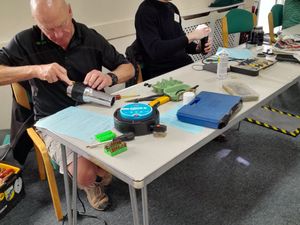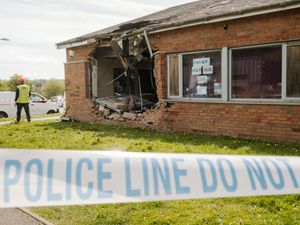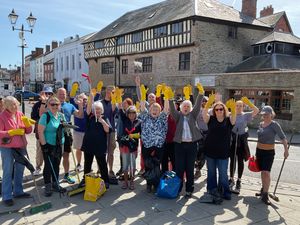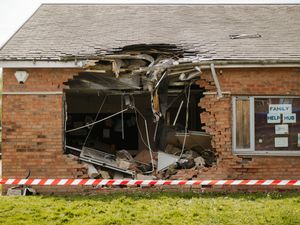The deserted Shropshire Medieval town that vanished without a trace
"Welcome to Bitterley in Shropshire, the quintessential English village."
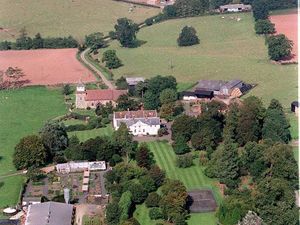
That's what Time Team presenter Tony Robinson said as he introduced an episode of Channel 4's famous archaeology show in 2011.
Situated a few miles north-east of Ludlow, modern Bitterley is a quaint village with a "lovely church" and "an imposing stately home."
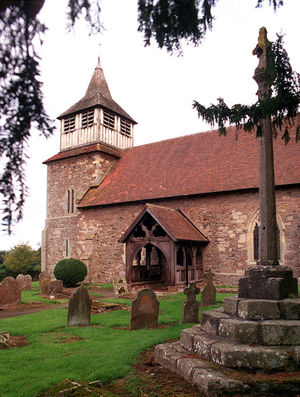
The whole community is skirted on all sides by "empty rolling fields," but those fields might not be as empty as they look.
Tony Robinson and the Time Team crew were in Bitterley to investigate a genuine mystery - the possible disappearance of an entire chunk of the village hundreds of years ago.
"Was quaint, little old Bitterley once a much bigger, bustling Bitterley?" Tony Robinson asked in his final piece-to-camera of the Season 19 Episode 2 introduction.
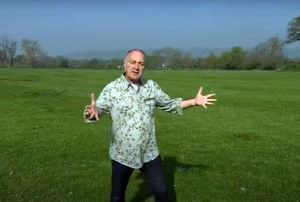
The question of a possible deserted Medieval village is often posed by the locals, and Time Team certainly weren't the first archaeologists to investigate Bitterley's interesting past, which officially dates back to the Domesday Book in 1086 (it was called Buterlei then).
The fields around Bitterley, particularly those a few hundred metres east of the modern village near the manor house, are full of strange lumps, bumps and suspicious-looking masonry.
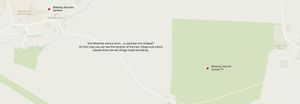
Pottery fragments, dating from the 11th to the 13th centuries, have also been uncovered, and as a result, it's impossible not to entertain the idea that hidden underground, are the remains of a deserted Medieval settlement.
Time Team producers knew about the folklore when they turned up in Shropshire with a big crew and a digger or two. There was apparently such local interest in the project that the whole village, including children, was keen to give them a hand.
Villager Richard Osborne said at the time: "We've had children from the school here digging under the supervision of the experts and we've found some lovely bits of Medieval pottery that we hope will be featured on the show."
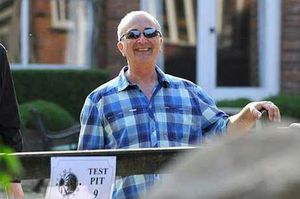
The villagers are important in this story because it's their enthusiasm for the mystery that keeps it alive.
And their main theory, born out of tradition and word-of-mouth storytelling, isn't particularly outlandish either.
Before we go into the local theory, it's worth mentioning that many Medieval villages have disappeared over time for a number of different reasons, and they're very hard to recover once they're buried under hundreds of years of human existence.
The Black Death, farm animal diseases, crop failures, weather calamities, local disputes, economic pressure, and even wealthy landowners demolishing 'unsightly' old buildings are all cited as possible reasons for the sudden death of thriving communities around the country.
It is, therefore, very possible that there's an abandoned ghost town buried under or to the east of Bitterley, and the local theory proposed during the Time Team episode was that residents abandoned the old village because of the plague.
In the 14th Century, the bubonic plague pandemic known as the Black Death did indeed cause a lot of people to leave their homes to avoid coming into contact with the infected. It was so devastating and the death rate so high that sometimes they didn't move back.
Another theory is that one historical owner of the aforementioned "imposing stately home" may well have had his beautiful view obscured by peasant hovels, and removed them when it was appropriate to do so. Landowners behaving in this way was not uncommon, but there's absolutely no evidence this happened in Bitterley.
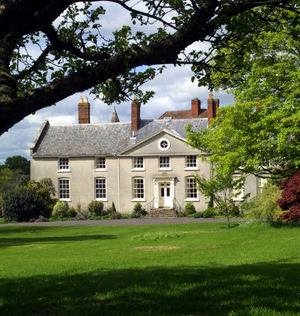
With the help of villagers and a local archaeology group, the Time Team crew dug multiple test pits and trenches and found lots of Medieval pottery, but the land surveys "identified no traces of an abandoned Medieval settlement."
Overall, the three-day search for a missing village 700 metres to the east of the current community proved to be very much inconclusive.
Wessex Archaeology analysed the Time Team investigation and said that while pottery dating to the 12th to 13th centuries was recovered, "the geophysical and topographical surveys and the evaluation trenches targeted upon supposed area of the deserted Medieval village identified no traces of an abandoned Medieval settlement."
The summary added that "all remains identified were agricultural in origin and probably belonged to the post-Medieval period."
Basically, despite the excitement and expectation, Time Team found a number of field boundary walls and some pottery, but not bones, burnt wood or evidence of housing. They were also given access to a centuries-old map which clearly shows that if there was a settlement, it didn't exist by 1766. There was evidence of Medieval activity in the location of the present village but not too much going on in the surrounding fields, side for agriculture.
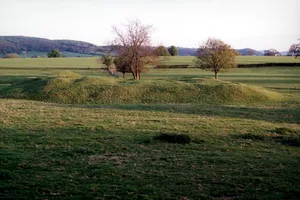
And this brings us to the final, and perhaps most realistic theory as to what lies beneath the fields of Bitterley.
Much of the land would have been used for agricultural purposes and over time the way the locals used the land may have changed. Things like technological advancement or a change of agricultural direction could easily prompt the moving of a village. Sadly, there's not much evidence that this happened either.
Wessex Archaeology wrote: "It is possible that Medieval structures may still survive in this area¸ sealed below the post-Medieval remains.
"If there was a Medieval village here, it appears to have disappeared by the 14th century.
"Depopulation due to the Black Death may have been one cause, but there were almost certainly other contributory factors."
Bitterley is surrounded by history, from hill forts to castles - not to mention the Norman church or the hoard of English Civil War coins found in the last decade - so it would've definitely played an important role in Britain's, and Shropshire's past.
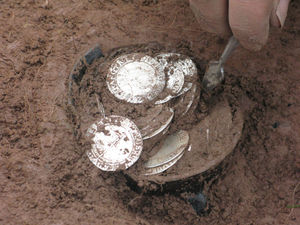
Whether the village was once much larger or located in a different place, though, is just one of those of mysteries of history that keeps rearing its hard-to-prove head.
One, more jokey theory made during the Time Team episode at the end of day one, when the crew fancied a pint, was that the old village was abandoned because Bitterley doesn't have a pub.
"A village that doesn't have a pub," said one of the show's most popular characters, Phil Harding. "What sort of a village is this?"
"Maybe that's why it disappeared," joked Tony Robinson. It seems there's as much evidence backing that theory as any of the others.
The search for Bitterley's Medieval roots continues.


